Internet slams team india’s Olympic uniform for being ‘too tacky’ as Mongolia aces the style game
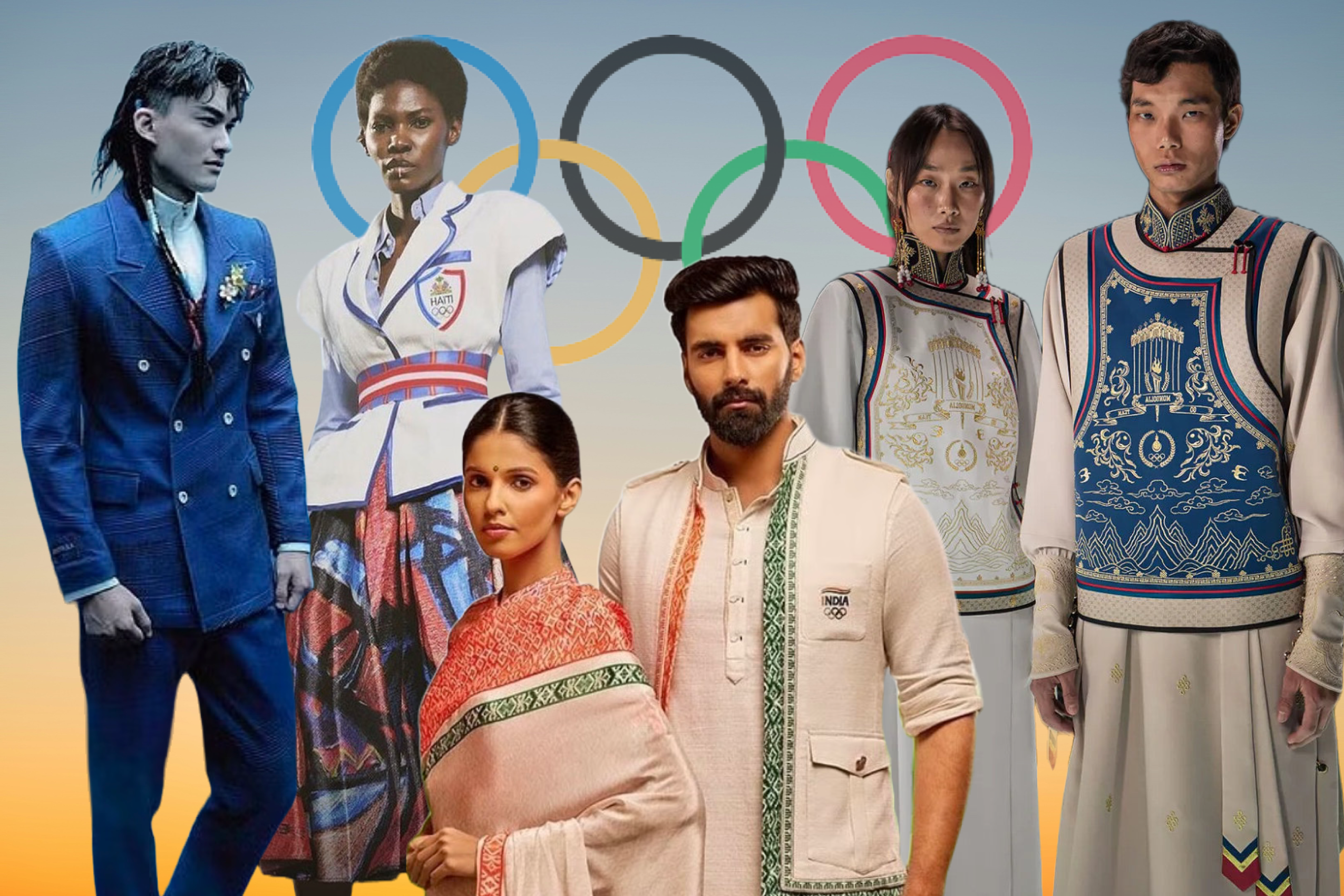
The Tarun Tahiliani pieces lack creative vision, failing to highlight the richness of the Indian fashion scene
LONDON:
The 2024 Paris Olympic Games have kicked off, and the buzz is all about the athletes’ uniforms for the opening and closing ceremonies. These outfits are not just clothing; they are symbols of national pride, designed by some of the world’s top designers.
Paris is no stranger to a catwalk, and this time the catwalk just happened to be the Parade of Nations. Over the course of the games that conclude on August 11, athletes will step out in the fashion capital of the world to flaunt their carefully crafted uniforms that represent and celebrate their home countries. And while some of these uniforms do deserve to be celebrated. Some do not.
Going for gold
Team Haiti’s uniforms are a burst of colour and culture, thanks to the dynamic duo of Haitian-Italian designer Stella Jean and Haitian painter Philippe Dodard. They’ve crafted outfits that scream vitality, featuring traditional Haitian weaving that makes you want to dance in the streets. These designs are a vibrant celebration of Haiti’s cultural richness and are a joy to behold. They give street style meets Olympic sport at its finest.
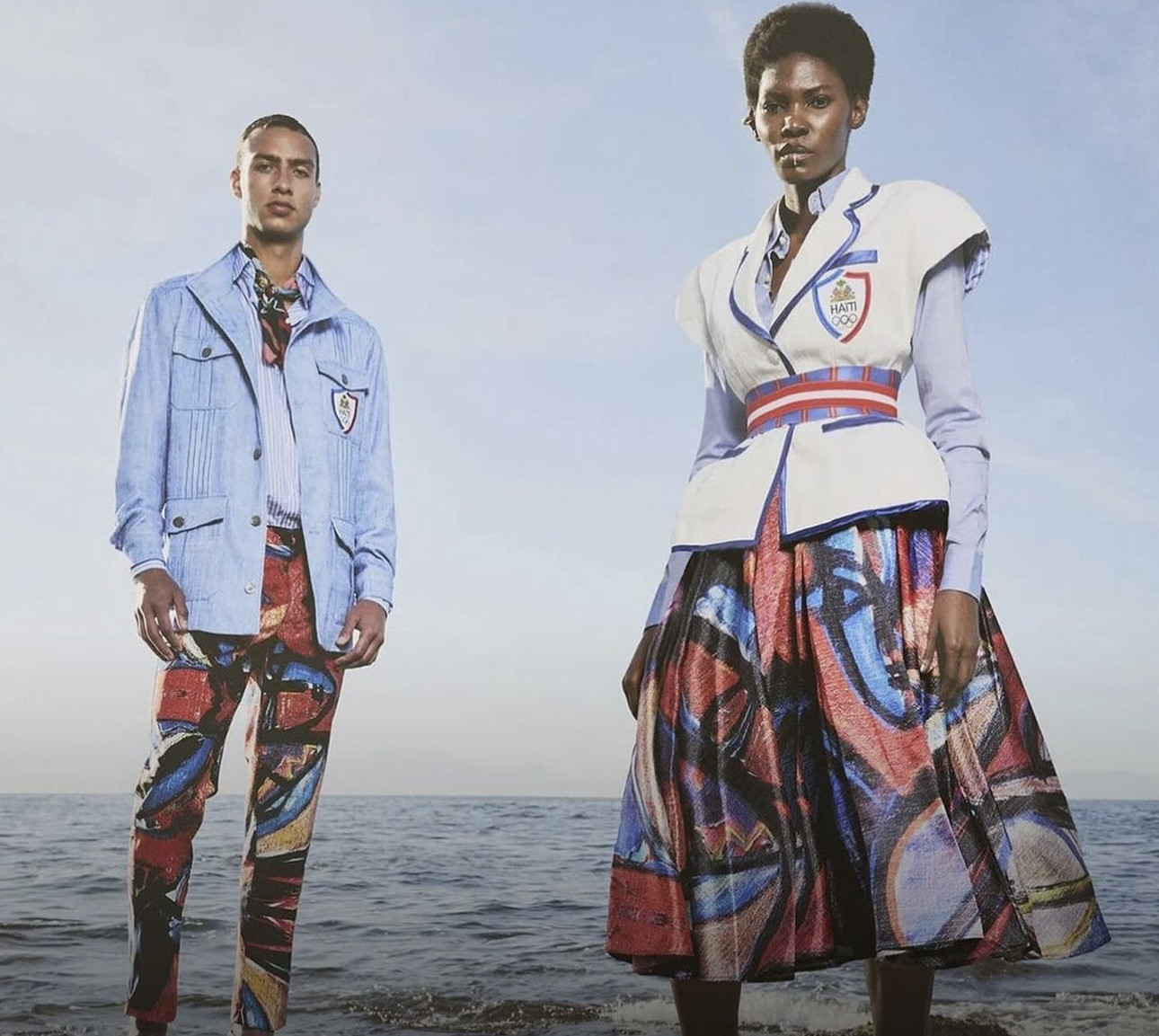
Meanwhile, Team Mongolia’s uniforms have taken social media by storm. Designed by Ulaanbaatar-based couturier Michel & Amazonka, these outfits are a chic nod to traditional Mongolian attire. With intricate embroidery, striking pleats, and a sophisticated use of national colours, each outfit took a whopping 20 hours to complete. Michel & Amazonka’s Instagram post compares the Olympic opening ceremony to Mongolia’s National Naadam Festival, drawing beautiful parallels between the two. They ended their note with, “The presence of a falcon on the flag of the formidable Mongolian army symbolises notions of strength, agility, and triumph in conquest. These symbols and rituals encapsulate profound cultural heritage and aspirations, resonating with themes of resilience, conquest, and cultural identity across diverse ceremonial traditions.” They liken athletes to mountaineers ascending Everest, a metaphor for the relentless pursuit of excellence. It’s deep, it’s meaningful, and most importantly, it’s stylish.

Chinese Taipei also brought their A-game, with designer Justin Chou at the helm. Chou’s brand, Just In XX, teamed up with artisans Yen Yu-Ying and Pei-Ying Lin to create uniforms that are a perfect blend of traditional Taiwanese culture and avant-garde streetwear. Banana fibre weaving and floral chest pins? Yes, please! Chou’s designs are a cultural treasure trove wrapped in contemporary cool.
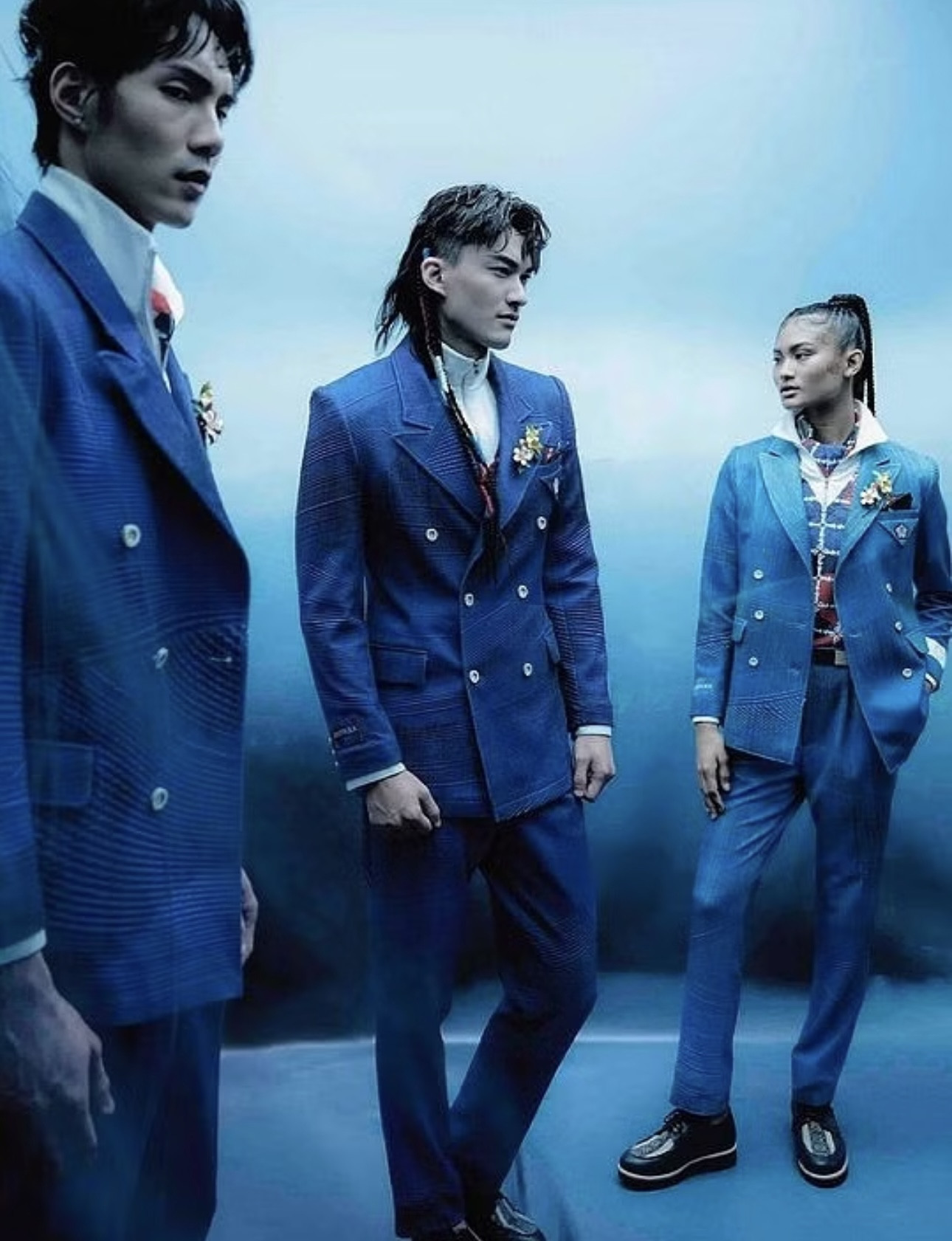
Sri Lanka’s uniforms, designed by LOVI, are nothing short of regal. Inspired by the Nilame and Manike (Prince and Princess) outfits of the royal court, these ensembles feature thousands of beads and intricate embroidery on silks and natural fibres. LOVI’s Instagram post emphasises the craftsmanship and cultural heritage woven into every thread. “The hand work alone-thousands of beads and embroidery on silks and natural fibres shares the story of Sri Lanka’s deeply rooted culture, craft and artistry to the world,” wrote the brand on Instagram. If fashion design were an Olympic sport, Sri Lanka would take the gold – or maybe silver if Mongolia is in the running.
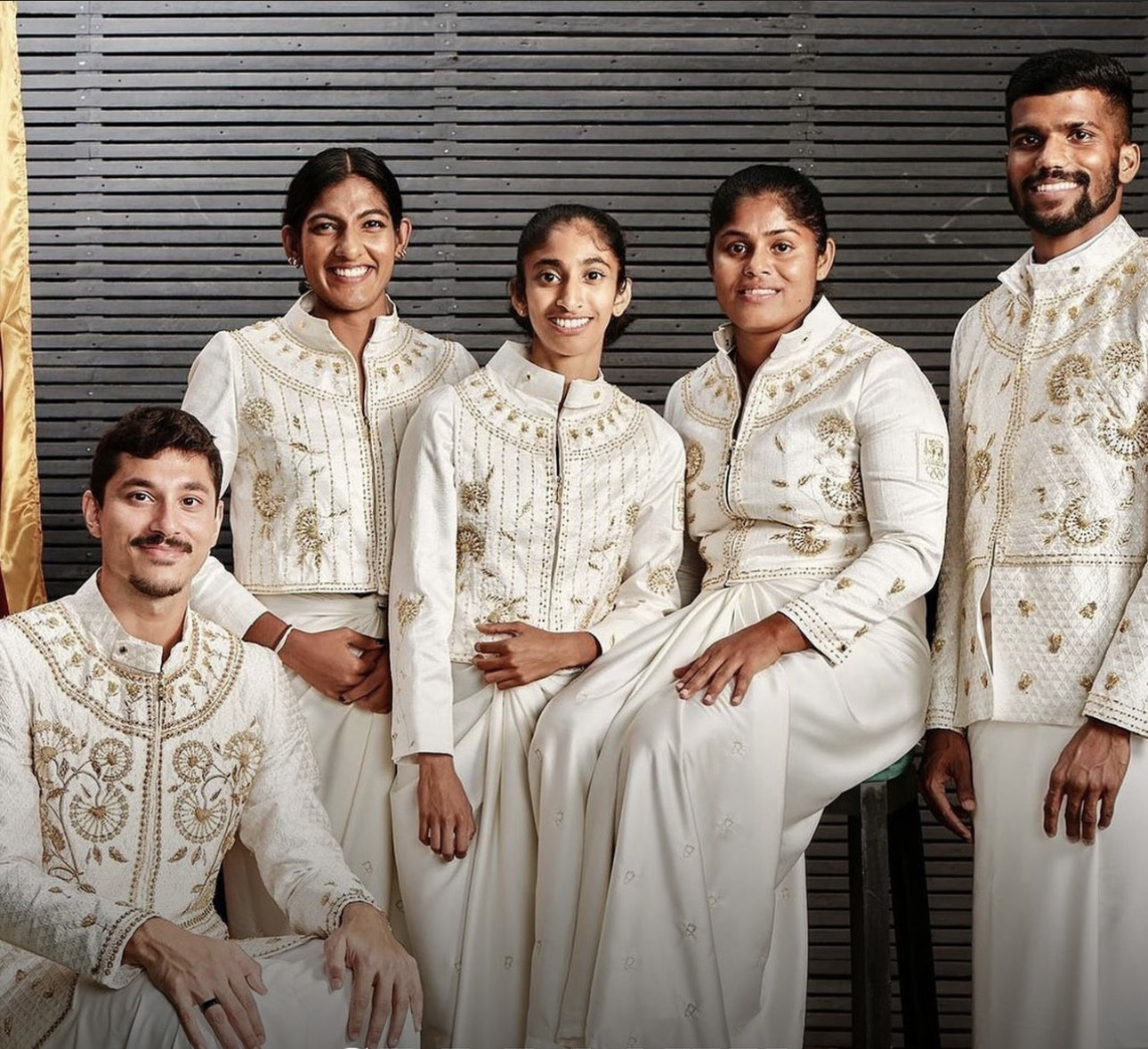
A fashion foul
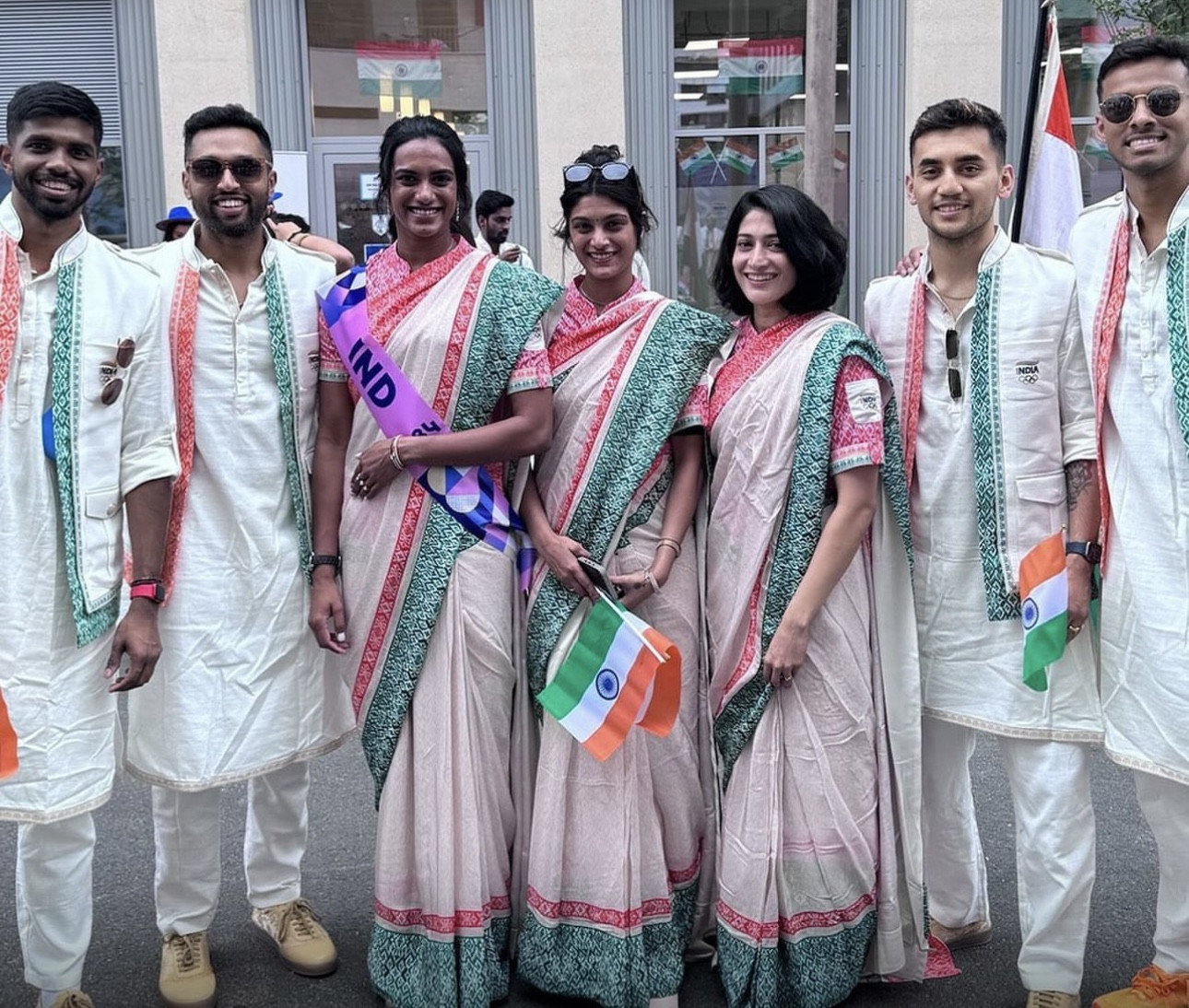
Now, let’s talk about the elephant in the room: India’s uniforms. Designed by the acclaimed Tarun Tahiliani, these outfits have been universally panned. Critics argue that Tahiliani missed a golden opportunity to highlight India’s rich textile traditions, opting instead for viscose and digital prints.
Tahiliani defended his choices to The Hindu, citing the practicality of viscose over cotton. “Cotton would have crushed badly. We used viscose because it is a wood pulp fibre and lets you breathe. It is cooler than silk,” he explained. Unfortunately, practicality didn’t translate to aesthetics. And I hate to break it to you Tarun, but the uniforms looked like they were in desperate need for an ironing anyway, proving that sometimes you should choose style over comfort.
Delhi-based designer Shilpi Gupta told Times of India that this was a chance for India to showcase its unique and creative fashion scene. “Today, the Indian fashion industry is talked about for its traditional yet modern clothing. This was an opportunity to make something unique and creative,” she said. Fashion commentator Shefalee Vasudev added that the debate shouldn’t be about print versus handwoven since the contract went to Tasva, known for quality mill-made fabrics. “Tasva is into quality mill-made fabric. It’s not a handloom brand. If someone had wanted a handloom imprint, the contract would have been given to those known for their handloom signature,” Vasudev noted.
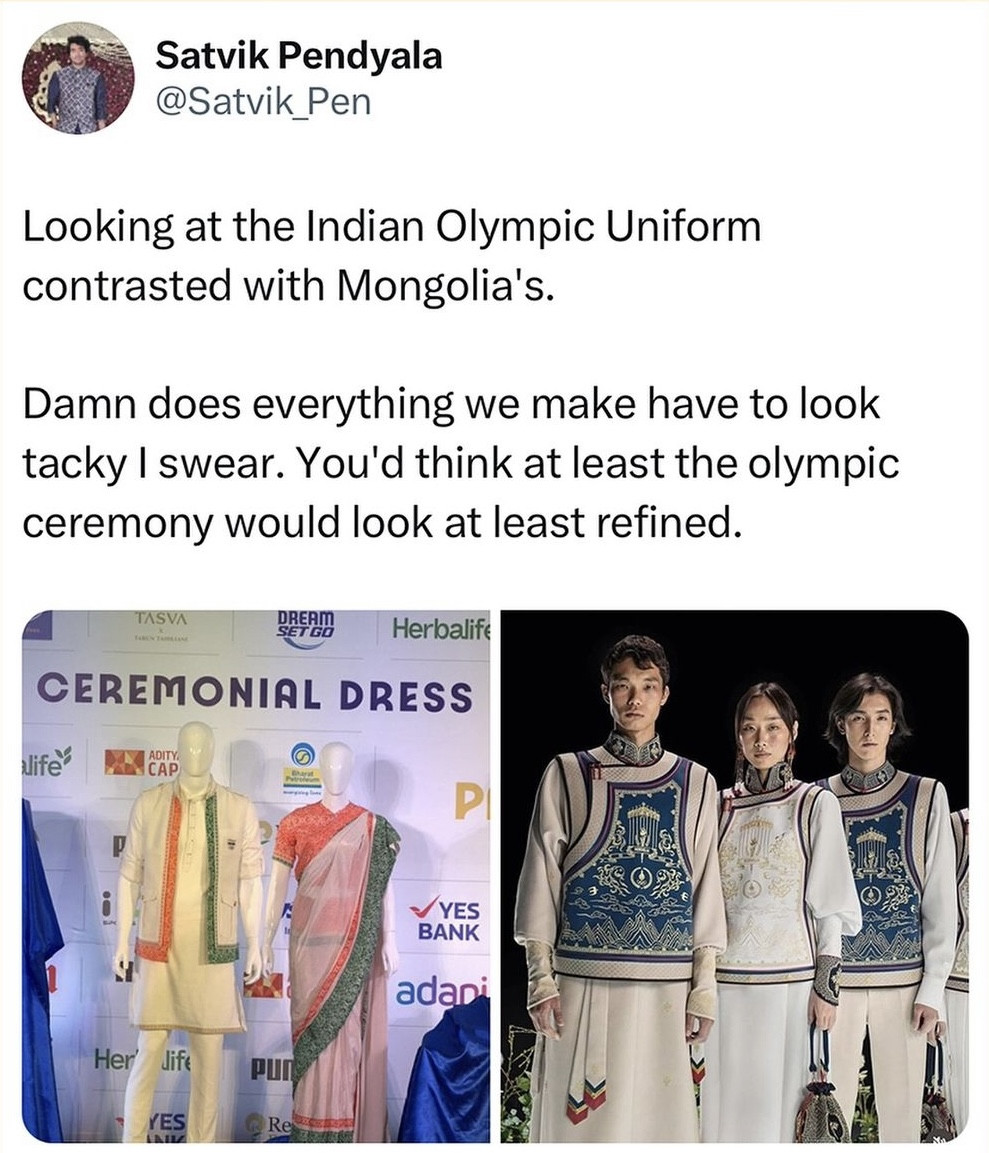
Netizens had a field day with India’s uniforms. As polarised as social media is, this was one of the rare times it unanimously agreed on something. “Truly inspirational work by Tarun Tahiliani for the Indian contingent at the Olympics. He’s inspired everyone into thinking they could have done a much better job,” wrote a user. Another compared the outfits with those of Mongolia’s saying, “Does everything we make have to look tacky? You’d think at least the olympic ceremony would look refined.” Hilariously, someone wrote, “The designers had ONE job and they chose factory settings.”
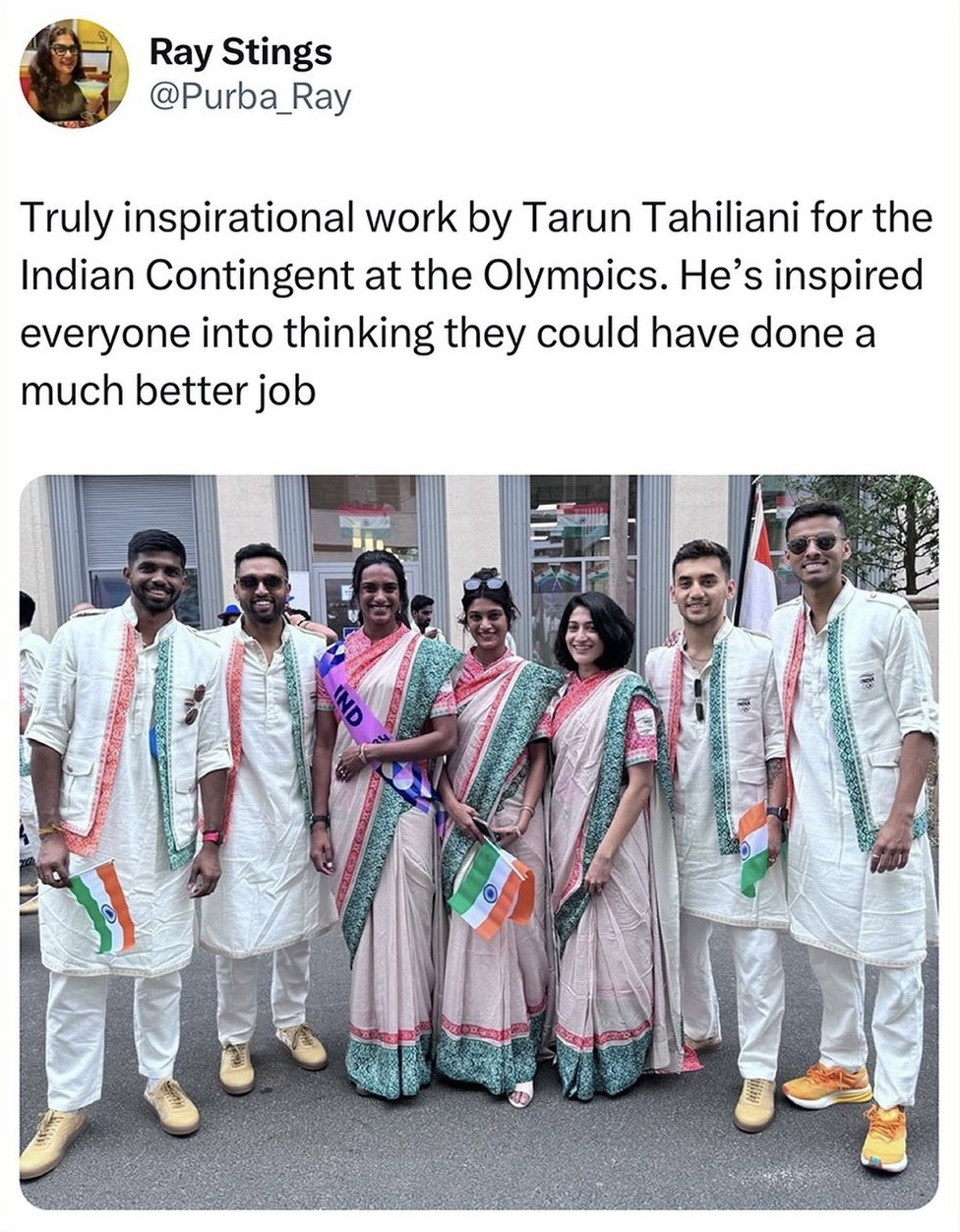
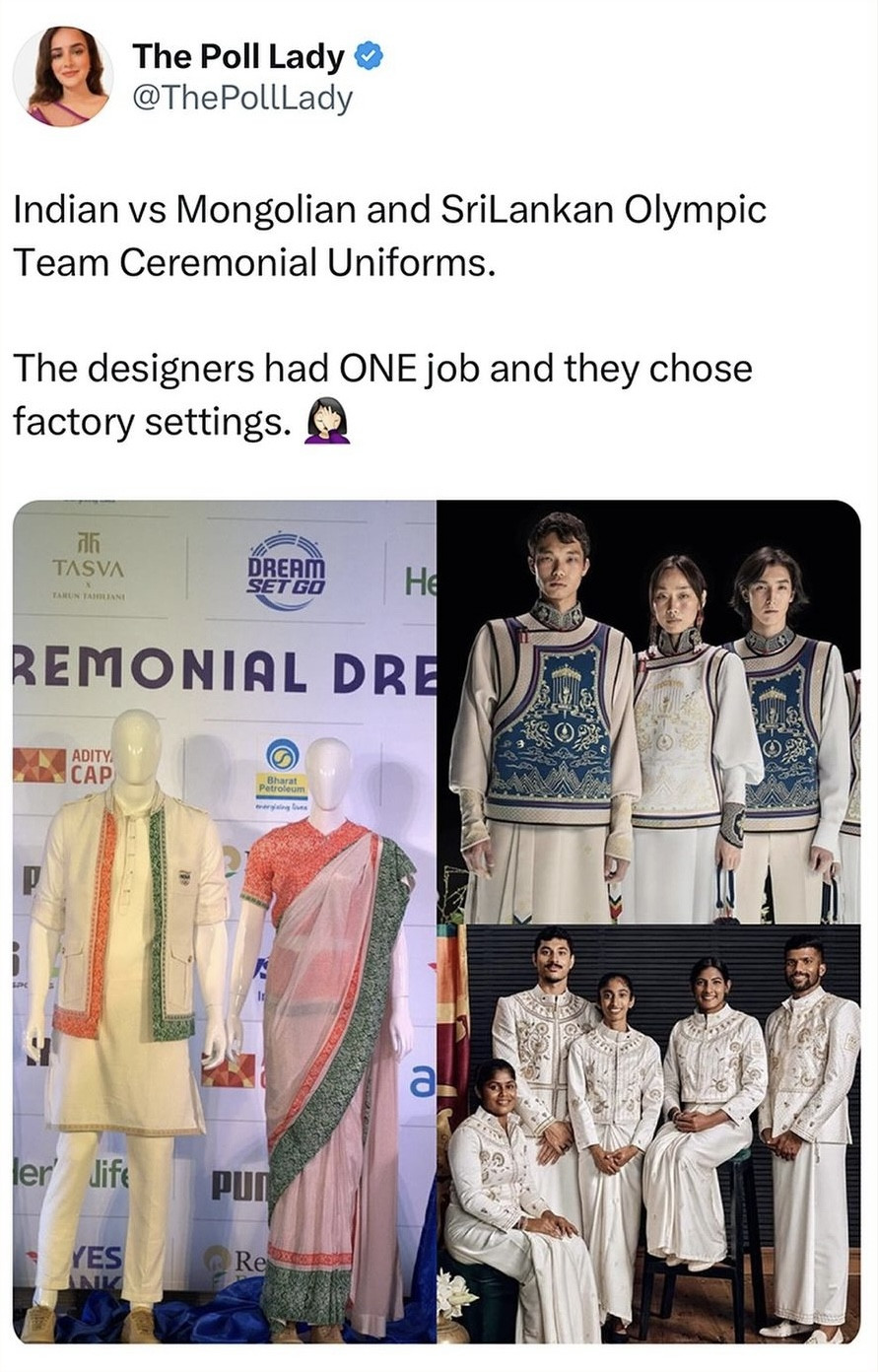
And I agree with every word. If Tahiliani had put in even an ounce of effort into these uniforms as he did dressing A-listers at the Ambani wedding, things would be very different. It seems like he pawned the task off to an inexperienced summer intern.
Other disappointing uniforms belonged to Team USA, but not because of their lack of style. Team USA’s Ralph Lauren creations were basic and unoriginal but still stylish, which is not really considered a crime in the fashion world. What is considered a crime however are creases. Which as you may have heard, Team India’s uniform had in abundance.
Have something to add to the story? Share it in the comments below.
link





